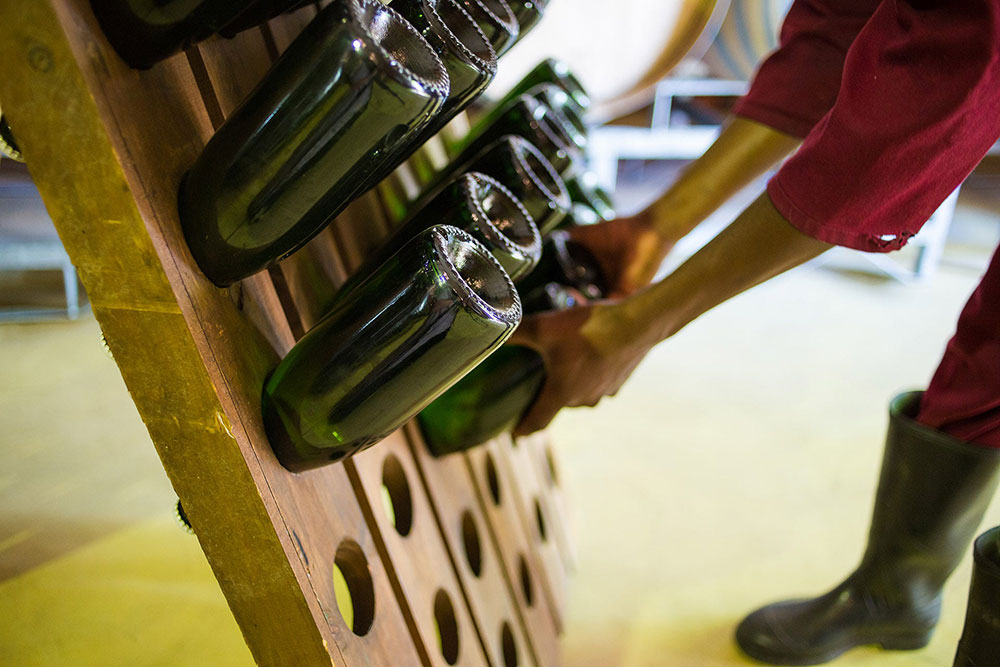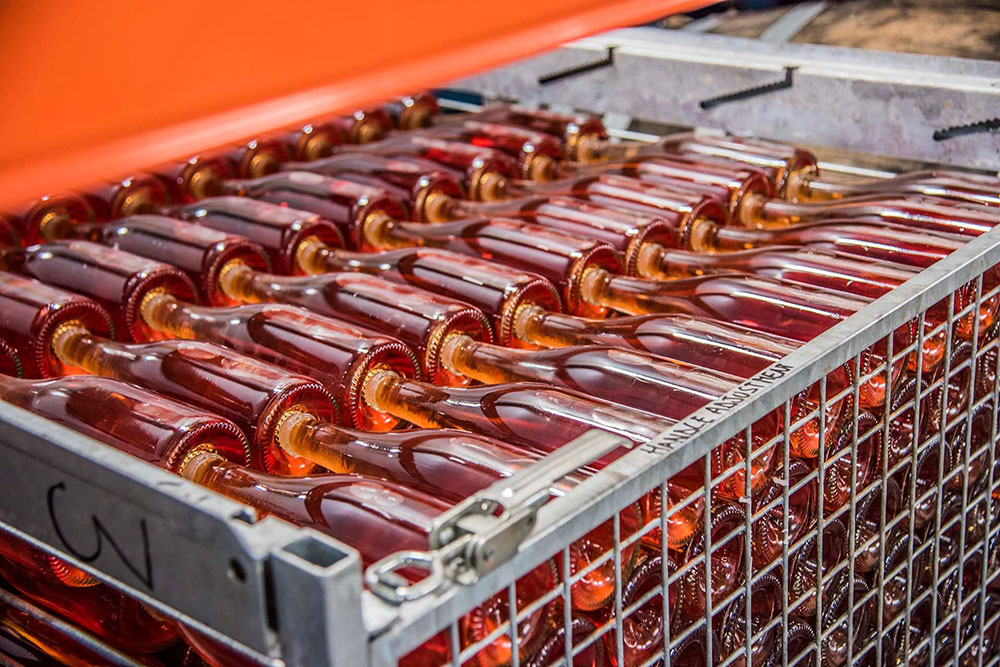One of the eight-plus steps used to transform still wine to sparkling is riddling, or remuage in French. Riddling happens towards the end of méthode Champenoise or traditional method of making Champagne, and it is the process of periodically rotating a bottle a quarter of a turn while simultaneously tilting it until it’s upside down. This movement causes sediment accumulating inside the bottle to slide down to the neck. The subsequent removal of those particles, called disgorgement, leaves the appearance of the wine clear instead of cloudy.

Cloudy sparkling wine for drinking isn’t a health concern, but Madame Clicquot, the eponymous widow of Veuve Clicquot fame, thought that Champagne would become more marketable and sell better if there were an effective way to remove sediment and make the wine clear.
Clicquot’s solution was to cut holes in a table at varying angles so bottles could remain stable as they were turned. This special table would later become known as a pupitre, which facilitated the system for remuage. A remueur (bottle turners) could turn 20,000 to 75,000 bottles a day, but this noble skill came at a considerable cost.
“Hand riddling is a very labor-intensive step of the sparkling winemaking process,” says Ana Diogo-Draper, director of winemaking at Artesa in Napa. “It can take up to six weeks to complete the manual riddling of a bottle of sparkling wine.”
In the 1970s, an invention called the gyropalette sought to alleviate the labor costs by automating the riddling process.
“Gyropalettes can riddle 24 hours a day and complete a riddling cycle in about seven days, depending on how much sediment is in the bottle,” says Diogo-Draper.

And, unlike manual riddling, a machine doesn’t need vacation, sick days or sleep.
Is there a difference in quality between wines that have been riddled via gyropalette versus manually?
“It’s a matter of getting 100% of the yeast to move down the neck to the mouth of the bottle,” says Hugh Davies, president of Schramsberg Vineyards. “Generally, that result can be achieved in gyropalettes.”
Davies further explains that “initially, we will work with a small set of bottles (100-500) of a larger lot to determine the appropriate sequence of turns. We can then very successfully replicate those turns on a larger scale with gyro-palettes. We continue to hand riddle our J. Schram bottlings, other smaller lots, and any stubborn batches that we may have. We find it helpful to have both options available to us.”
Domaine Carneros sparkling winemaker Zak Miller notes that an additional advantage to automated riddling is that “a [gyropalette] rack holds 504 bottles, and they are all consistent and have been riddled identically. This riddling program is repeated so all bottles have been riddled exactly the same, minimizing variation.”
The consistency, efficiency and lower cost of automated riddling have refined the sparkling winemaking process. It’s unsurprisingly widely adopted by contemporary producers.

“The technique of hand riddling is becoming less common, especially since there are few people remaining who have the skill, and it isn’t really being passed on generationally anymore,” say Remi Cohen, CEO of Domaine Carneros. “It isn’t the most ergonomic practice, so it takes a person skilled in the practice.”
Of course, there are a few exceptions.
“Some Champagne and sparkling-wine houses continue to hand riddle small lots or a portion of their bubbly to celebrate the ancient technique,” he says. “I am sure they appreciate the skill and hands-on dedication that goes into this craft, but the large majority of méthode traditionelle sparkling wines use the gyropalettes these days.”
Originally Posted On: https://www.wineenthusiast.com/basics/drinks-terms-defined/riddling-sparkling-wine-term/